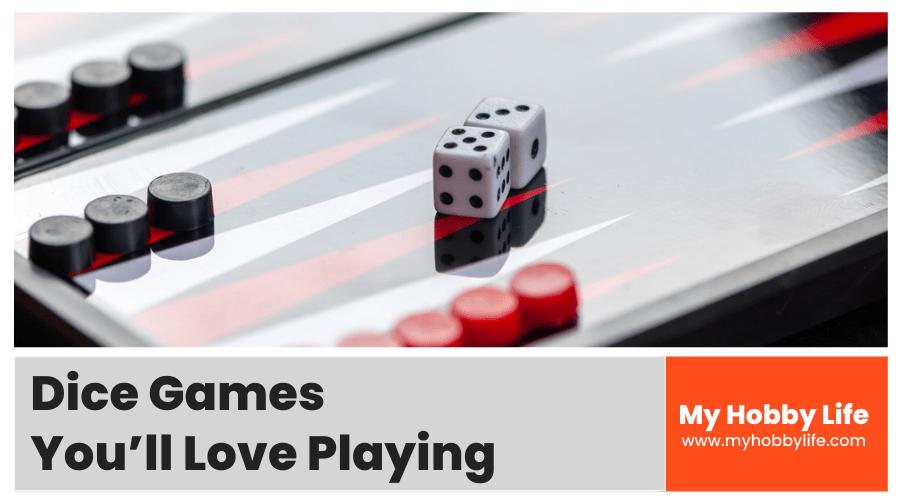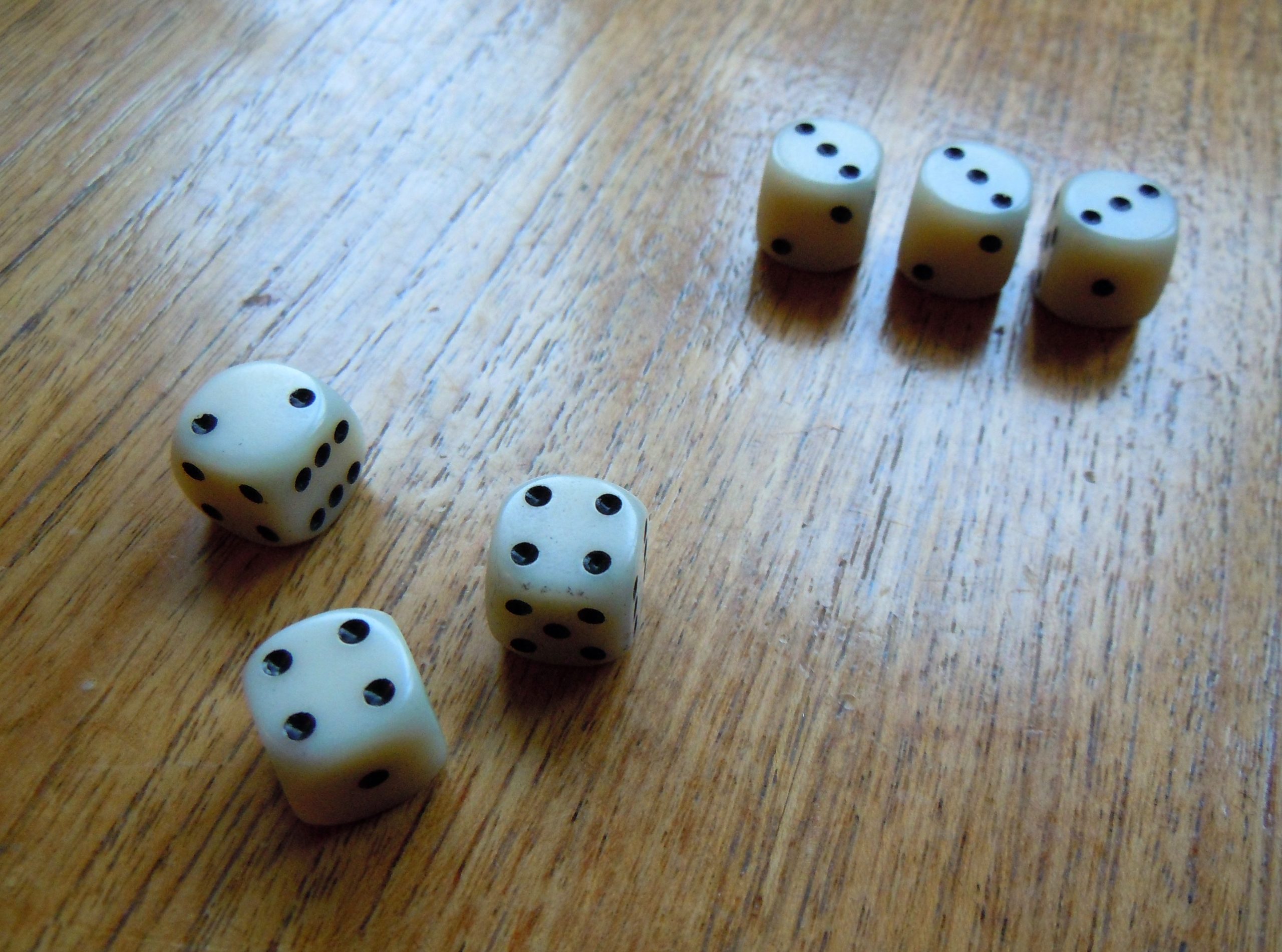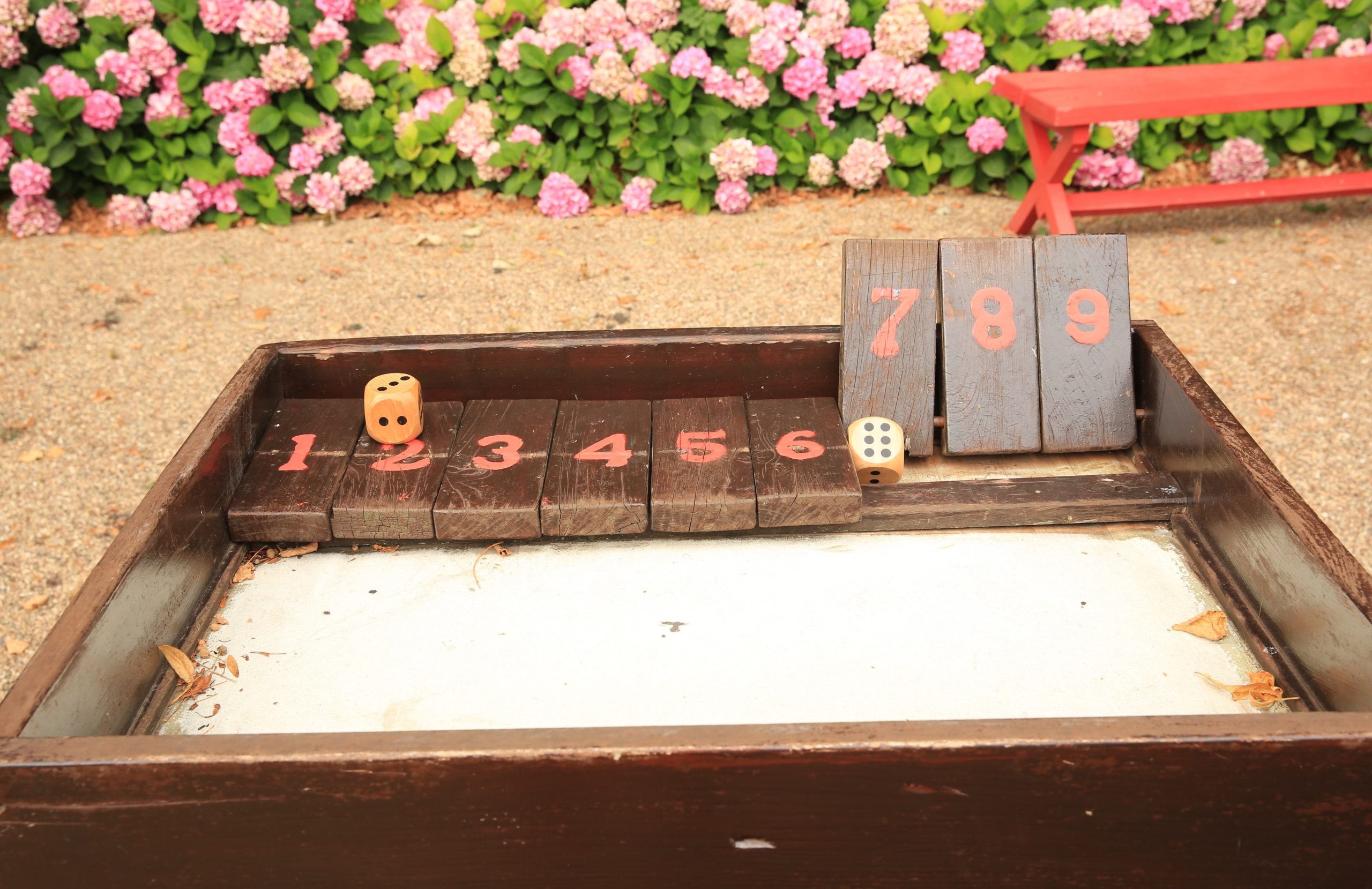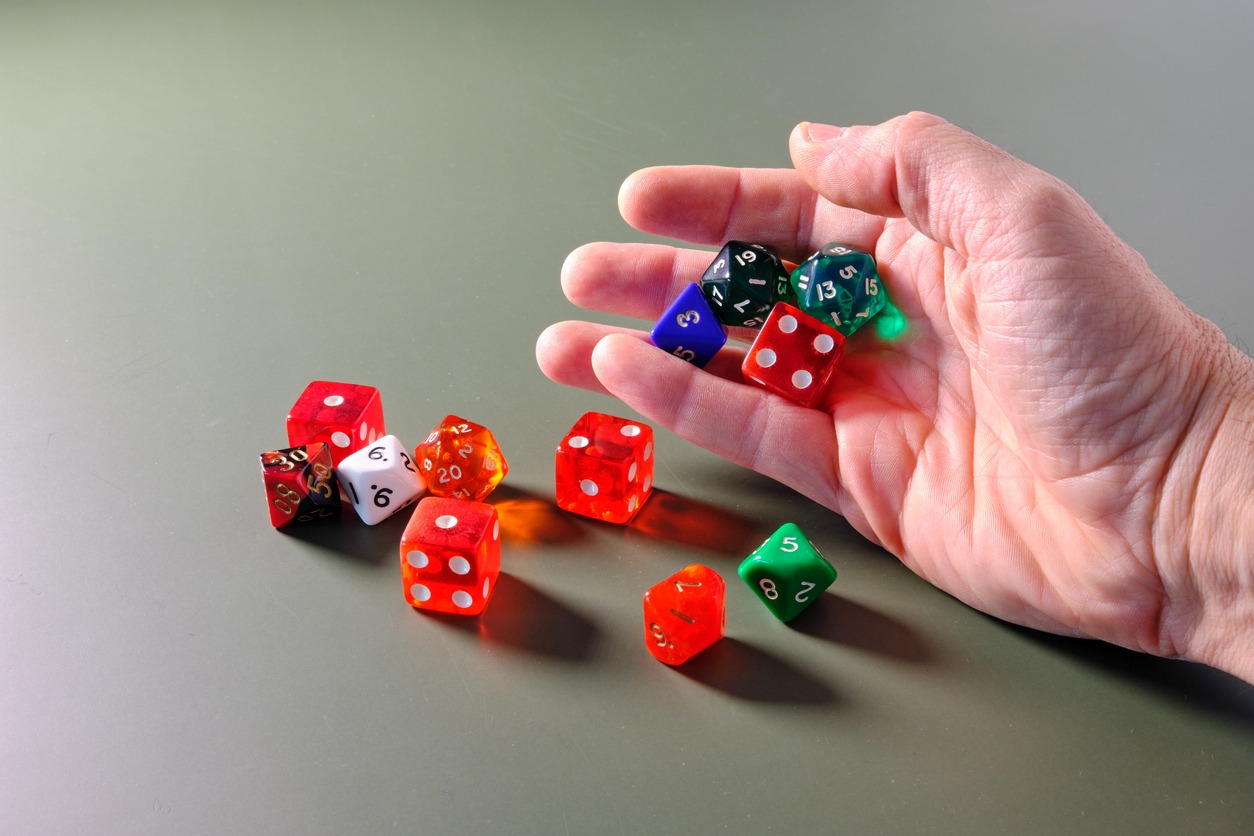Who says that having fun requires complex boards and intricate pieces? You don’t need much to have a spectacular party at home—just a pair of dice, possibly a charcuterie platter, some entertaining drinks, and, of course, a few excellent friends—in fact, you could even make it a monthly ritual.
These dice games will make it simple and affordable for you to host a gathering that will give you and your friends something to laugh about other than the most recent TikTok craze while also satisfying your competitive nature. All of these fun party games are easy to learn, so you can focus on catching up rather than adhering to the rules.
Best Dice Games
A nice dice game can be played at any age. The top dice games ever are listed here.
1. Backgammon
One of the most well-known dice games ever is backgammon, a two-player table game.
According to the results of two dice, each player’s fifteen pieces (checkers or players) alternate between twenty-four triangles (points). The “first to bear off,” also known as the game’s main objective, is to remove all fifteen checkers off the board.
Backgammon is thought to have come from the Irish game Anglo-Scottish, which dates back to the 1600s and is similar to the French game Toutes Tables and the Spanish game Todas Tablas.
The dice-rolling portion of the game combines strategy and a small amount of luck. The player must make wise actions and foresee potential countermoves, even if the dice are quite important.
Because it’s a game of luck and strategy, you can be sure that you’ll have the most fun possible.
2. Boggle
Boggle is a well-known dice game that uses letters rather than numbers on the dice. It’s also a word game.
In this game, players use a plastic grid of lettered dice to try to make words out of groups of adjacent letters.
A 44 tray with 16 cubic dice is available.
Each of the dice’s faces is imprinted with a different letter. After the dice are placed, only the top letter of each cube is visible.
After the grain has settled, the tray is covered and shaken for three minutes before the sand timer begins. The play will then begin with all of the actors acting at the same time.
Different countries have different Boggle variations with different letter distributions. In the British version of current Boggle, for example, the simpler letters, such as just the letter K, are used.
3. Dice Chess
Dice are frequently employed to change the rules of play in the chess variants of this game.
The game’s moves are decided by rolling two standard six-sided dice.
In India, Burma, and Europe between the 11th and the 14th centuries, dice chess originally appeared. Before each turn, the pieces were randomly assigned to which direction they would go.
There are several variations of dice chess. Because the rules might change from game to game, dice chess doesn’t have a set of rules.
4. Yahtzee
Milton Bradley’s dice game, Yatzie, was published by the National Association Service of Toledo, Ohio, in the early 1940s. This game is similar to the popular Scandinavian Yatzy game.
Edwin S. Lowe, a game entrepreneur, changed the name of Yahtzee in 1956. Previous versions of Yahtzee included the old dice games Poker Dice, Yacht, and Generala.
The basic goal of the game is to score points by rolling five dice and forming specific combinations. In one turn, a player may roll the dice three times to generate different scoring combinations. The dice must fit within the confines of the box.
There are thirteen rounds in this game. The player selects the score category for each round after it has concluded. The category is used only once and never again.
Each scoring category has a variety of point values, some of which are fixed while others are determined by a random dice roll. The player with the most points is the winner.
5. Farkle
Farkle’s basic rules are well known, unlike those of dice chess, but there are numerous other ways to play and score.
Participants will need a 6 or 5, depending on the variation, as well as paper and a pen to keep score. At the end of each round of dice-throwing, the person with the most points wins.
Farkle is an excellent game for multiple players, so play it with your friends the next time you get together.
6. Tenzi
Tenzi is a quick game, and outcomes can change in a matter of seconds for the participants.
Every player receives 10 dice to use in this game, unlike most dice games. As a result, the player will need to roll their dice as quickly as they can and assemble dice with matching numbers as soon as feasible.
Tenzi will be shouted, and the game will be won by the first person to complete the objective. The rules of the game add to the variety, interaction, and challenge of this game, which also has a number of versions.
The ideal number of players for this dice game is two to four. It is a brief game that provides intense entertainment.
7. Bunco
If you’re seeking for a dice game to entertain twelve or more people, bunco is the best option. The game, sometimes known as bunko or bonko, can include two or more players.
The participants are divided into two or four person teams. Each participant will roll three dice six times in an effort to accumulate points.
If a player rolls three consecutive numbers that are all the same, for example, they might achieve a bunco.
Originally created as a confidence game akin to three-card monte, bunco. The game, also known as Eight Dice Cloth, was created in England in the 19th century.
In San Francisco, bunco was first practiced as a form of gambling in 1855. After the Civil War, however, the game evolved into a well-liked parlor game. The game gained popularity as a family activity after the 1890s.
Of all the dice games, bunco is the most well-liked. The game of bunco included a world championship in 2006.
8. Qwixx
This game was created and released in 2012 by Steffen Benndorf. The game with six dice can be played by two to five players.
This is among the most well-liked dice games. The game was considered for the 2013 Game of the Year award. Similar to that, the game took home the Dutch Games Award in 2014.
The straightforward game of Qwixx is reminiscent of older dice games like Kniffel and Yazzie. Six dice are contained in a gaming block. The other six dice are red, blue, yellow, green, and two are white.
This game lasts for roughly 15 minutes. The basic goal of the game is to mark as many numbers as you can in the four rows of color on the game block in order to accumulate as many points as you can.
9. Zambales
The Philippines’ Zambales region is where this dice game first appeared. Hence, Zambales.
A typical pair of 6-sided dice are used to play this game. Two dice featuring Roman numerals and other symbols can also be used to play the game. Dice are often made of little wooden cubes.
There are five opportunities to roll a matched pair. The game is over for the players who fail to roll a matching pair within the allotted five rolls. The players make wagers before starting to play.
The wagers include both absurd and commonplace items. The crowd will enjoy this game because it is engaging and fast-paced.
10. Button Men
“Button Men,” a two-player game created by James Ernest, was first made available in 1999. This game is quick-paced and simple to pick up.
Playing this game takes less than 10 minutes and offers brisk enjoyment. The player is represented by a pin-back button or a playing card of their choice.
The buttons have a diameter of about 2-2.5 inches (5-6.5 cm) and are made of metal or plastic. The discs are attached to garments with a pin on the back.
The participant adopts the role of the adversary. Each button shows the player’s total number of dice as well as their maximum value.
11. Shut the Box
A few more names for Shut the Box include Canoga, Batten Down the Hatches, and Trick-Track. This game can be played by one or more players or by a team of two to four.
This game used to be a gambling game. A counting box and tiles with numbers 1 through 9 are used in this game. The box is covered by a hinged or sliding mechanism.
The rules of this game come in several regional and customary variations. The box contains 10 or 12 tiles, depending on the variations. The main objective of the game is to close more numbers by rolling the dice.
Until one player is successful in closing all of the numbers, the players will keep rolling the dice and closing numbers. Then, in order to win the game, the player must declare “Shut the Box.”
One of the best dice games you can play with your buddies for the most enjoyment is this one.
12. Liar’s Dice
You’ll need at least two players to get started with this one. The objective is to fool and catch your opponent red-handed.
There are two variations of the game: single hand and common hand. Every participant has a set of dice in a single-hand game of Liar’s Dice. The dice are rolled once for each player. Each player can see both their hand and all of the hidden dice (the hands of the other players).
In contrast, one set of dice is passed from player to player in the traditional hand-dice liar’s game. The bids have to do with the dice. Following the re-roll of a few dice, they are placed in front of the bidder.
Each player gets five dice in a single hand. With dice cups, it is hidden. On the same hand, both players simultaneously roll their dice and look at their hands.
13. Doodle Master
Doodle Master is a game for adults that brings out the artist in you. Four or more players can play on their own or in teams. When it’s your turn, you draw two cards—one black and one white—and roll two dice. Then you have 2 minutes to draw what the dice and cards told you to make. If another player can guess what you’re drawing, you get points. You get one point for the character and one point for the scene. Also, the person who guesses right gets points. When there are a lot of people, they can split into two teams instead of playing alone.
14. Genius Square
Each player will get a game board with 36 small squares, 7 blockers, and 9 colored shapes. Next, someone will roll all seven dice, and both contestants will put their blockers in the squares that the dice show. Lastly, both players will try to fit the colored shapes into the squares around the blockers at the same time. The winner is the first person to fill their whole square. If you’re playing by yourself, you’ll follow the same steps, but you won’t be competing against anyone.
15. Story Cubes
Even the youngest kids can use their imaginations and be creative with this fun activity. There are nine dice, each with six sides. Together, they have 54 symbols that can be interpreted in different ways. You can play the game in different ways, but the point is to tell a story with the dice. You should start with “Once upon a time…”
What To Look for in Dice Games
Number of Players
Different numbers of people work best for different dice games. The Genius Square is best for two people, so it’s a great choice for a post-dinner dice game, while Doodle Master is a great choice for a group. Look for a dice game that can be played with small or large groups and has rules that can be changed to fit.
Game Time
No one wants to play a game that takes three hours right before bed. Many dice games are pretty short, which is great because they are a fun and quick way to end the night. If you want dice games that can be played in different amounts of time, like a 15-minute speed round or an hour-long game, buy a few with different run times.
Age Range
Not every game is fun for kids of all ages. Some, like Story Cubes, are best for kids and are great for learning, while others are better for older kids and adults. When it comes to the age ranges for dice games, choose games that fit the age range of the people you spend the most time with.
Benefits of Dice Games
Furthermore, tabletop games, such as dice games, provide a number of advantages that other pastimes, such as gaming, do not. Aside from the fun and bonding time that a simple pair of dice can provide, you can also expect the following benefits:
- Better relationships with family or friends
- Improved problem-solving skills in fast-paced situations
- Significant stress reduction
- Improved communication and social skills
- An increased sense of accomplishment and competitiveness
Conclusion
Some dice games could be a good choice if you want to do something that gets everyone talking to each other. You can even collect dice games, which makes them a great replacement for trading cards and figurines.



